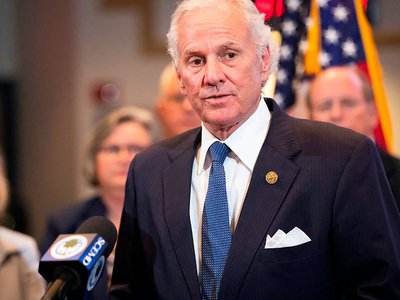U.S. Border Patrol agents arrested more than 300 MS-13 gang members who attempted to sneak into the United States from Mexico in the government's fiscal year 2022, according to new federal data.
Federal law enforcement agents who work in the largely unfenced area between vehicular ports of entry on the 2,000-mile southern border apprehended 312 members of the Mara Salvatrucha gang in fiscal year 2022, which ended Sept. 30, according to U.S. Customs and Border Protection data released over the weekend. The arrests do not include other MS-13 members who evaded detection and made it past agents.
America's border crisis as a whole worsened in September, as more than 208,000 noncitizens were arrested nationwide, bringing the total for 2022 to 2.3 million — the highest number in national history.
The number of illegal immigrants arrested and later determined to have a criminal conviction in the U.S. or another country also spiked to the highest level in the past six years — previous data were not available. CBP data revealed 12,028 criminals were nabbed between the ports of entry, and another 16,993 criminals were stopped while attempting to pass through land, air, and sea ports of entry.
MS-13 originated in Los Angeles several decades ago and primarily comprises Salvadoran citizens. MS-13 arrests at the border have fluctuated through the years, though CBP does not show historical trends on its website. During the Trump administration in 2019, MS-13 arrests topped 460, according to CBP data.
Because federal law says all illegal immigrants must be apprehended and processed by Border Patrol, the surge of migrants over the past year and a half has forced agents and other resources to be diverted to regions where illegal crossings are most common, and this allows Mexican cartels to move criminals and narcotics through spots that Border Patrol has left unguarded.
A Washington Examinerinvestigation in 2019 found that asylum-seeking immigrants who fled Central American countries to get away from transnational criminal organizations, such as MS-13, were released into the U.S. only to find the exact same gangs terrorizing immigrant communities, including those right outside Washington, D.C.
Five federal and local officials who were part of a congressionally created gang task force in Northern Virginia said MS-13 remains the biggest threat of any gang in Northern Virginia, Maryland, and Washington. As of late 2019, MS-13 had approximately 3,000 members in northern Virginia.
“Gangs tend to prey on their own community,” said Henry Pacheco, gang response team coordinator for Prince William County at the time. “There are kids that have joined gangs here, Hispanic gangs, and they’ll tell you, ‘I don’t want to do it, but I have to do it. I’m stuck. They know my grandparents back in El Salvador. They know my uncles, aunts. If I don’t do what they say, they’re going to get whacked or something.' There’s that blackmail part of it that’s true.”
The violence associated with MS-13 most often occurs when gangs are fighting each other. If MS-13 sees a neighborhood that is out of its control has become a hotbed for profitable criminal activity, it might try to take the area over. The result is two gangs that are extremely violent trying to stake a claim. MS-13’s motto is "kill, rape, control.”







